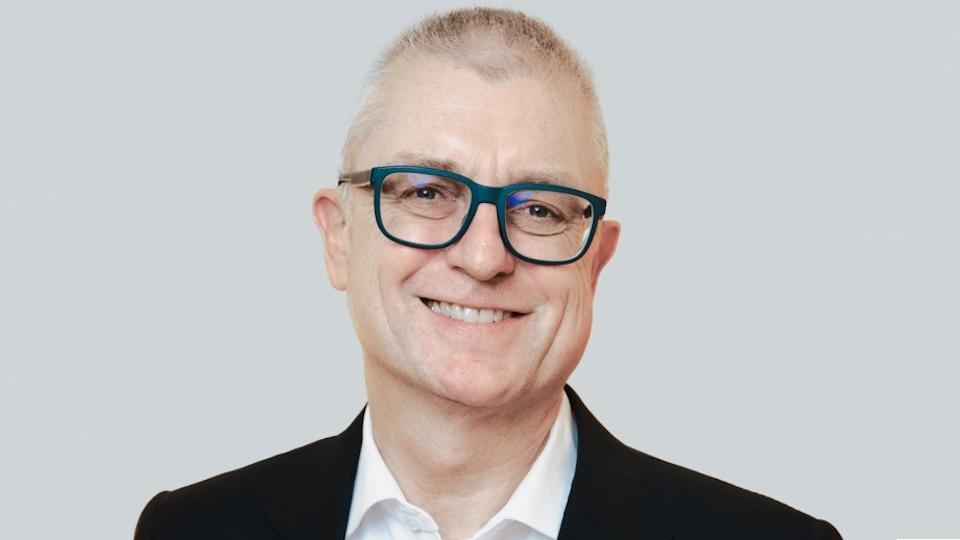The constants of pharma marketing

Veteran marketer Neal Wolff’s career has taken him from big pharma to US-based biotech Nevakar. We spoke to him about how working in smaller companies compares to bigger firms and how the principles of pharma marketing remain solid despite the digital revolution.
What does your current role involve?
Nevakar is a specialty pharmaceutical company focused on developing innovative ophthalmic and injectable products. Our drug repositioning efforts identify new therapeutic indications of existing molecules by developing novel or superior formulations. These new products with proprietary enhancements are filed with the FDA, primarily under the 505(b)(2) regulatory pathway.
While some of the products are smaller opportunities than seen in big pharma, I’ve learned that value creation happens in all sizes – you can create value on a smaller scale or a larger scale, but value creation is about addressing unmet needs in the market and identifying opportunities that lead to better outcomes for patients and improvement in the healthcare system. My role is to help shape our brand strategy and work with our leadership team to help define how best to maximise the value of the products we’re developing.
How have you found the differences in working in big and small pharma?
It’s not really different in terms of ‘what’ you do – defining the opportunities is still the same, you still talk to customers, you still have advisory boards, you still do market research, albeit with fewer resources.
But what I like about smaller companies is the speed at which decisions can be made thanks to the lack of bureaucracy that exists in bigger companies, where you need to get decisions vetted by multiple layers of an organisation.
What are the main challenges marketers like yourself are facing today?
In a smaller company, even though you have fewer resources you still need to get the market access strategy right, you still have to work with the R&D organisation to make sure that the target product profile addresses the unmet need. That doesn’t change no matter what size company you are. But you won’t dedicate resources as early in smaller companies as you will in bigger companies. That can be a challenge, but even so in Nevakar we are doing some of the best market research that I’ve done in my career, and I’m very proud of the work we are doing to understand the market opportunity and make well informed business decisions.
Could bigger firms learn anything from smaller companies?
Culture is key. When a bigger company acquires a smaller company, they want to keep the culture of the smaller company in place; they want to keep the DNA of what made that smaller company great. But over time the smaller companies tend to get absorbed and become part of the larger corporation. It’s just the nature of acquisitions – you’re looking to be accretive and not dilutive and you’re looking to maximise the value out of the asset that you’ve acquired, but you don’t really need redundant staff, so over time you adopt the processes of the new company and hope that works. And I’ve seen it work very well.
On the other side, though, there are examples like Sanofi’s acquisition of Genzyme. I think Sanofi really tried hard with Genzyme to keep its culture separate and keep the company nimble and innovative. Sanofi has kept Genzyme up in Boston, they’ve pushed some of their programmes up there too, and I think that model is working better than others. They know that in the rare disease space you must be really close to the customer, and they know that a bigger company would lose that. What you hope is that Genzyme’s culture affects Sanofi and creates more innovation and nimbleness for Sanofi, but it’s always hard because of the size of the company.
Patients today are more informed and engaged than ever – how has that changed your role?
I think patients are both more informed and more misinformed at the same time. There’s a lot of misinformation about diseases out there.
When pharma companies try to use social media to inform and educate it doesn’t usually go very well. All of the regulations surrounding it create a lot of barriers and so it comes across as very calculated and inauthentic, but to be successful in talking to patients you have to be authentic and credible.
Authenticity is hard to achieve for big pharma. The best approach is speaking to patients and initiating a conversation to understand what they’re dealing with so that you can better deliver products that can address those needs.
I’ve seen very effective partnerships with patient and advocacy organisations. If you have an honest dialogue about what the objectives of each group are you can find common ground where you can work together. You’re not always going to agree 100% with any advocacy organisation but if you can find areas where there are gaps in education and awareness, or trouble with reimbursement for certain diagnostic tests etc., companies and advocacy groups can work together and be on the same page. That’s where you can build a lot of this credibility and these groups can see what the company is really like – are they really thinking about us as patients or are they just in it for their own best interest?
What has been the biggest change for marketers in recent years?
The biggest change in our industry right now isn’t the messaging and the positioning and the work that’s needed to shape a market – that’s still the same approach – it’s where does the message need to be placed? And how is that message communicated?
Unfortunately, a lot of companies don’t execute their digital strategies very well. They put a lot of money there, they go in with good intentions, but they. struggle with the channels and how to best get their message out there in an authentic and credible way. It’s a big challenge because we work in a highly-regulated industry.
The views expressed are Neal’s and do not reflect the views of Nevakar, Inc.
About the interviewee
 Neal is currently Head of Marketing at Nevakar, Inc. In this role, he is responsible for all Marketing activities across the entire Nevakar portfolio of oncology, ophthalmic and critical care products. He leads in the creation and execution of all marketing activities across Nevakar's portfolio of products including four product launches by 2020.
Neal is currently Head of Marketing at Nevakar, Inc. In this role, he is responsible for all Marketing activities across the entire Nevakar portfolio of oncology, ophthalmic and critical care products. He leads in the creation and execution of all marketing activities across Nevakar's portfolio of products including four product launches by 2020.
Prior to Nevakar, Neal was Executive Vice President and Chief Commercial Officer for Ecofiber and was responsible for launch and growth strategies for the startup nutraceutical firm. Before that role, Neal was at Bristol-Myers Squibb most recently as the Worldwide Cardiovascular Commercial Lead for the marketing and development efforts for the early and late-stage cardiovascular portfolio. While at BMS, Neal also worked on the Eliquis and Plavix brands in both US and Global roles. Prior to BMS, Neal had a series of commercial and marketing roles at Sanofi, The Medicines Company and Abbvie (formerly Abbott Labs). Neal has proven leadership skills and strong track record of success in US and Global Commercial leadership positions, with extensive experience in shaping commercial strategy, executing strategic portfolio choices and launching products.











